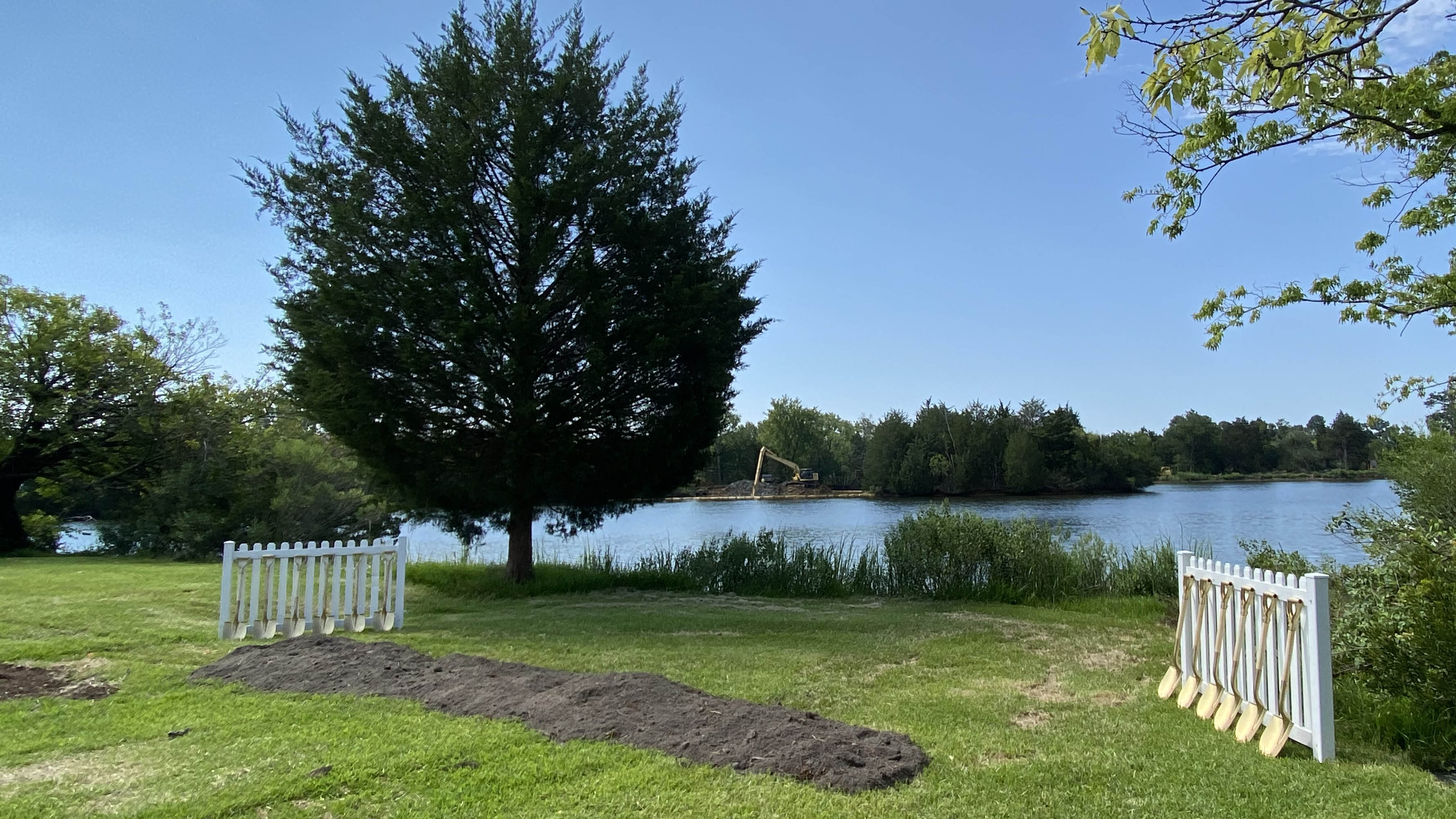
Hampton officials broke ground Friday on a $34 million set of infrastructure projects they hope will help the city face impacts from climate change in the decades to come.
The projects are the first to be constructed under a bigger, long-term initiative called Resilient Hampton — designed to adapt the city to “live with water.”
“We've learned many lessons since our initial commitment to be a leader in resiliency,” Mayor Donnie Tuck said at a groundbreaking ceremony at Lake Hampton. “We're constantly adapting to the challenges we face. If we continue to follow this path, the future of Hampton will thrive with water.”

Officials ceremonially break ground on the Resilient Hampton initiative on Friday, Aug. 18.
Living with water
Hampton has more than 120 miles of navigable waterfront, the city says, making it vulnerable to both regular tidal flooding and surging waters during storms.
But Bonnie Brown, Hampton’s community development director, said Friday that the goal “is not to engineer water away” like many typical capital improvement projects.
“Rather than fighting it, the Resilient Hampton approach seeks to embrace the water while protecting our assets and our population from complex threats,” Brown said.
Resilient Hampton grew out of a regional event eight years ago called the Dutch Dialogues, which brought together Hampton Roads officials and Dutch engineers and planners to discuss solutions to flooding and smart development. Officials in the Netherlands are considered world leaders in water management solutions.
City officials were inspired to think differently about living with water, Carolyn Heaps, Hampton’s resilience officer at the time, told WHRO last year.
They adopted a policy framework of the same name, and then the more specific Resilient Hampton initiative a few years later.
The suite of projects would ultimately cover different vulnerable parts of the city. Officials are currently working on a plan for the downtown, Buckroe and Phoebus areas that the city council will vote on this fall. It includes proposals for tide gates and home elevations.
This week’s groundbreaking launches construction on three projects in the Newmarket Creek watershed.
At Lake Hampton, where officials held Friday’s ceremony, the city plans to improve stormwater management while building a “resilience park.” It will include a little over a mile of sidewalk and a shared use path that connects to the existing Waterwalk Trail.
They also plan to raise a half-mile stretch of North Armistead Avenue by up to 5 feet.
Further west is a project called the Big Bethel Blueway. Starting at the intersection of Big Bethel Road and Albany Drive, it will transform an existing drainage canal into a stormwater storage facility and public green space, the city says.
Together the three projects, which will cost a total of about $34 million, are expected to add more than 8.6 million gallons of stormwater storage capacity in the Newmarket watershed, according to the Chesapeake Bay Foundation.
Peggy Sanner, the foundation’s executive director in Virginia, emphasized at Friday’s ceremony that the improvements will also help reduce waste that runs into and pollutes local waterways.
That type of pollution ultimately ends up costing local governments that have to meet state water quality standards.

A rendering of the new Big Bethel Blueway.
A new way to pay
To finance the massive undertaking, Hampton is the first in Virginia to use a relatively new funding mechanism called an environmental impact bond.
The city borrowed $12 million in 2020 from private investors interested in funding environmental and climate solutions.
The impact bond requires the city to provide data on how its measures are working, which takes it a step further than a green bond or typical municipal bond, said Jason Lee, director of Quantified Ventures in Washington, D.C., which helped facilitate the bond for Hampton.
The bay foundation also helped design the parameters.
Hampton has also received a total of more than $9 million from the state for Resilient Hampton projects through the Community Flood Preparedness Fund. That’s funded by Virginia’s proceeds from the Regional Greenhouse Gas Initiative, from which Gov. Glenn Youngkin is planning to withdraw.
The city got another $13 million from the FEMA Hazard Mitigation Grant Program and nearly $5 million from the Virginia Department of Transportation.




